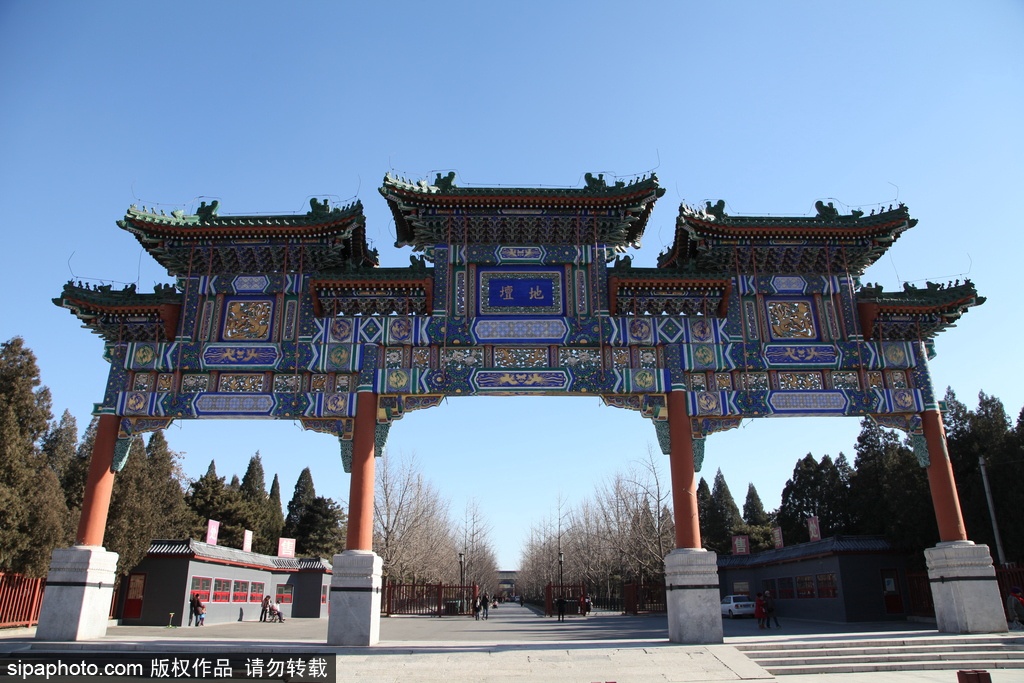Temple of Earth

Ditan Park is the seat of the Temple of Earth in the Ming and Qing Dynasties(1368 - 1911). The Temple of Earth is called Fang Ze Tan, or "square water altar". Emperors of the Ming and Qing dynasties would attend the annual summer solstice ritual of offerings to the heaven. It is the largest temple where emperors can worship the god of Earth. The building complex are facing the north with an area of 430,000 square meters, the management area of 374,000 square meters. The Temple of Ear this divided by two enclosed Square walls into inner part which is on all sides of doors and outer part with a door on the west. There is an altar street between the outer door and Andingmen Wai Avenue. The leading and mark of the Temple of Earth is the three four-column, seven-floor wooden archway on the west end of the Avenue the central axis of the inner altar is slightly skewed to the east.
The Temple comprises three main groups of constructions with Fang Ze Tan and The Imperial Respecting House on the central axis. The Divine Warehouse and the Sacrifice Pavilion are on the west of Fang Ze Tan, ancillary buildings such as The Fast Palace, Bell Tower and Altar of the God Horse are on the northwest. The inner cornice of the building is painted with Pearl phoenix and Seal color paintings The buildings are surrounded by cypress trees, setting off a solemn atmosphere. Fang Ze Tan, which is the main building of the Temple of Earth, is the royal grand ritual place, commonly known as worshiping platform. The altar is square shaped, referring to the old Chinese idea of a square shaped Earth. It is used to be surrounded by water, symbolizing "Ze Zhong Fang Qiu" which means begging for the mercy of the God. The layout of the south-north and the plaster stone paved by lunar number six or eight symbolizes "the earth is yin", and the yellow glass brick symbolizes "the yellowing of the ground".
The Imperial Respecting House is located on the south side of the Fang Ze Tan and opens five rooms facing north. It is surrounded by walls and there is a door to the north. The wall and door is covered with yellow glazed tiles. It is used as a spot for worshiping the God of the Earth and many other Chinese gods. Temple painting is Pearl phoenix and Seal color paintings for which the original appearance of Emperor Qianlong of the Qing dynasty is preserved.
Main scenic spots: the Divine Warehouse, the Sacrifice Pavilion, The Fast Palace, The Imperial Respecting House, Altar of the God Horse, Memorial Archway, Fang Ze Tan(The Fangze platform), Bell Tower, Ayurvedic Retreat
Address: Ditan Park, Andingmen Wai Avenue, Dongcheng District, Beijing东城区安定门外大街地坛公园
Traffic Guide: Beijing Subway Line 2 Yonghegong Lama Temple Station (雍和宫站) or Andingmen Station (安定门站). Beijing Subway Line 5 Yonghegong Lama Temple Station or Hepingli Beijie Station (和平里北街站).



